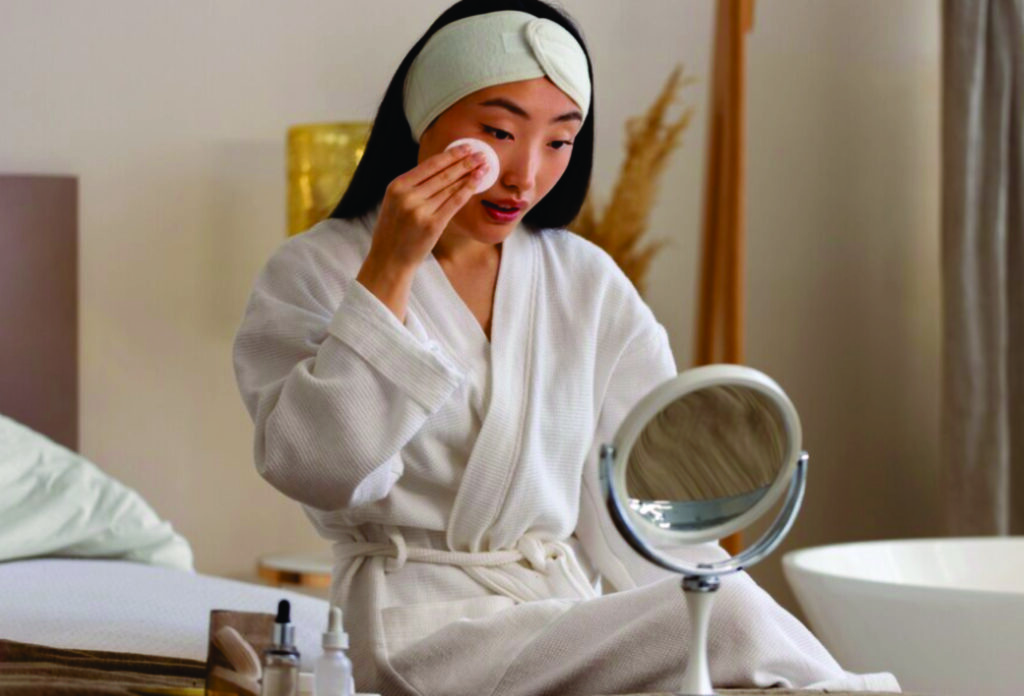Allergic reactions to cosmetics are more common than you might think. Many people experience skin irritation, redness, or rashes after using certain beauty products. The main culprits are fragrances, preservatives, and certain chemical compounds. Understanding how these ingredients affect your skin is the first step in preventing allergic reactions.

Common Symptoms of Cosmetic Allergies
When your skin reacts to a cosmetic product, symptoms may appear immediately or take several hours to develop. Common signs include:
- Redness and inflammation
- Itching or burning sensations
- Dry, flaky patches
- Swelling around the eyes or lips
- Blisters or hives
According to the American Academy of Dermatology (AAD), contact dermatitis from cosmetics is a frequent issue, especially among individuals with sensitive skin (AAD, 2023). If you notice any of these symptoms, stop using the product right away. However, symptoms alone do not always confirm an allergy. A dermatologist can help identify the specific ingredient causing the reaction.
Key Ingredients That Trigger Allergic Reactions
Some cosmetic ingredients are more likely to cause allergic reactions than others. Knowing what to avoid can help prevent irritation. Here are some common triggers:
1. Fragrances
Many beauty products contain synthetic or natural fragrances. Even if a product is labeled «unscented,» it may still contain fragrance ingredients to mask other odors. According to research from The Journal of Clinical and Aesthetic Dermatology, fragrance allergies are one of the leading causes of cosmetic-related skin reactions (JCAD, 2022). If you have sensitive skin, look for «fragrance-free» options instead.
2. Preservatives
Preservatives like parabens, formaldehyde-releasing agents, and methylisothiazolinone help extend a product’s shelf life. Unfortunately, studies by The National Institute for Occupational Safety and Health (NIOSH) indicate that these chemicals can lead to skin irritation and allergic reactions in some individuals (NIOSH, 2023).
3. Essential Oils
Although essential oils are natural, they can still trigger allergic responses. The American Contact Dermatitis Society has identified lavender, tea tree, and citrus oils as common irritants, particularly for those with sensitive skin (ACDS, 2023).
4. Dyes and Pigments
Some synthetic dyes, especially those found in makeup, can cause irritation. A study in The International Journal of Cosmetic Science found that natural mineral-based pigments are often a safer alternative for individuals with reactive skin (IJCS, 2022).
How to Avoid Allergic Reactions to Cosmetics
Avoiding allergic reactions requires a few simple precautions. Here’s what you can do:
1. Read Labels Carefully
Always check ingredient lists before buying a new product. Avoid products that contain known irritants or allergens. Dermatologists at Mayo Clinic suggest looking for non-comedogenic, hypoallergenic, and fragrance-free labels to reduce the risk of irritation (Mayo Clinic, 2023).
2. Perform a Patch Test
Before using a new product, apply a small amount to your inner wrist or behind your ear. Wait 24 to 48 hours to see if any reaction occurs. If there is no redness, itching, or swelling, the product is likely safe for you.
💡 Personal Experience: I once bought a cream without checking for potential allergens. I applied it directly to my face, only to experience burning and redness within minutes. Thankfully, the jar was small, so I didn’t waste much product—but the lesson stayed with me: always patch-test new cosmetics first!
3. Choose Hypoallergenic Products
Some brands offer hypoallergenic cosmetics designed for sensitive skin. While this does not guarantee a reaction-free experience, it reduces the risk of irritation.
4. Use Fewer Products
Applying multiple skincare or makeup products increases your exposure to potential allergens. Simplify your routine by using only essential products.
5. Be Careful with Natural Products
Although natural cosmetics sound safer, they can still contain allergens. Ingredients like botanical extracts, essential oils, and plant-based preservatives can cause reactions in some people.
What to Do If You Have an Allergic Reaction
If you develop an allergic reaction, follow these steps:
- Stop Using the Product Immediately – Do not continue using a product that causes irritation.
- Wash the Affected Area – Gently cleanse your skin with lukewarm water and a mild, fragrance-free cleanser.
- Apply a Soothing Cream – The American Academy of Allergy, Asthma & Immunology (AAAAI) recommends hydrocortisone cream or an anti-inflammatory moisturizer to calm irritation (AAAAI, 2023).
- Take an Antihistamine – If the reaction is severe, an over-the-counter antihistamine may provide relief.
- Consult a Dermatologist – If symptoms persist, a dermatologist can recommend a treatment plan and allergy testing.
The Importance of Allergy Testing
If you frequently experience allergic reactions to cosmetics, consider getting an allergy test. The Cleveland Clinic states that dermatologists can conduct patch testing to determine which ingredients you should avoid, making it easier to find safe products and prevent future reactions (Cleveland Clinic, 2023).
Conclusion
Preventing allergic reactions to cosmetics is possible with the right precautions. Reading labels, performing patch tests, and choosing hypoallergenic products can help protect your skin. If you suspect an allergy, consult a dermatologist for professional guidance. By taking these steps, you can enjoy beauty products without the worry of irritation.

I’m Victoria, the creator behind Eva My Balance. Passionate about beauty, wellness, sustainable living, and mindful self-care. My mission is to inspire you to live consciously and beautifully—inside and out.


